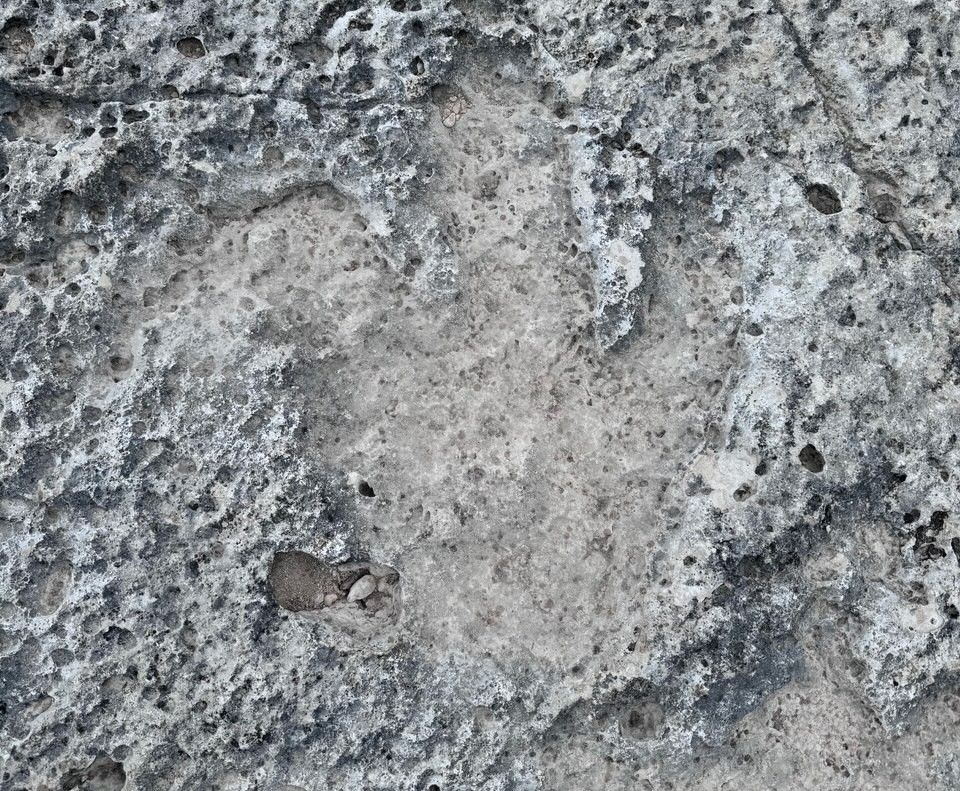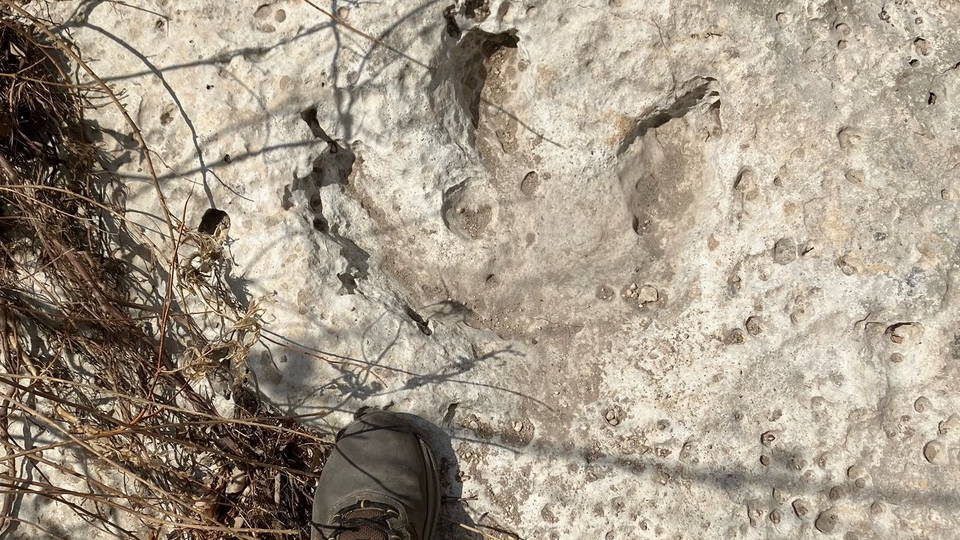Dinosaur footprints revealed by recent floods in Texas
Published by Adrien,
Source: North Carolina Museum of Natural Sciences
Other Languages: FR, DE, ES, PT
Source: North Carolina Museum of Natural Sciences
Other Languages: FR, DE, ES, PT
Follow us on Google News (click on ☆)
In Travis County, northwest of the state, volunteers were cleaning up debris left by recent floods when they stumbled upon these footprints. Measuring between 18 and 20 inches (46-51 cm), these three-toed marks have been identified as belonging to a carnivorous dinosaur by Matthew Brown, a paleontologist at the University of Texas.

Finding dinosaur footprints in central Texas is not uncommon.
Credit: Kenneth Bader/UT Austin
These footprints, arranged in crisscrossing patterns, suggest that multiple dinosaurs were moving together. Matthew Brown explains that these tracks could belong to dinosaurs similar to Acrocanthosaurus, a 36-foot-long (11 m) bipedal predator. This discovery provides a unique opportunity to study the behavior and movements of these ancient giants.
The region is known for its rich fossil deposits, particularly in the 110-million-year-old Glen Rose geological formation. The floods exposed these footprints by eroding the upper layers of rock, revealing traces that had remained hidden for millions of years.
Researchers plan to use drones and surface scans to create 3D models of the tracks. These modern technologies will enable more precise analysis of the footprints, providing unprecedented data about dinosaur life in this region. Texas continues to prove itself as a key location for understanding the dinosaur era in North America.

15 dinosaur footprints dating back 115 million years were uncovered by floods in Texas.
Credit: Kenneth Bader/UT Austin
What is Acrocanthosaurus?
Acrocanthosaurus was a carnivorous dinosaur that lived during the early Cretaceous period, approximately 115 to 105 million years ago. With an estimated length of 36 feet (11 m), it was one of the largest predators of its time in North America.
This dinosaur shared several characteristics with the famous Tyrannosaurus rex, though it was less massive. Its footprints, like those discovered in Texas, are recognizable by their distinct three-toed marks, evidence of its predatory nature.
Fossils of Acrocanthosaurus have primarily been found in what is now the United States, particularly in Texas and Oklahoma. These discoveries have helped scientists better understand the diversity and distribution of theropod dinosaurs in North America.
The study of these footprints and fossils continues to reveal details about the lifestyle, hunting, and social behavior of these ancient predators, enriching our knowledge of the dinosaur era.
How do floods reveal fossils?
Floods can play a crucial role in fossil discovery by eroding surface layers of soil. This natural process exposes older geological layers where traces of past life, such as dinosaur footprints, may be preserved.
In the case of the footprints found in Texas, floodwaters washed away the sediments covering the rocks of the Glen Rose formation. This erosion uncovered footprints that had remained hidden for millions of years, offering a rare opportunity for paleontologists.
Modern technologies, such as drones and 3D modeling, now allow these discoveries to be documented and analyzed with unprecedented precision, even under challenging conditions. This opens new perspectives for studying traces of ancient life on Earth.